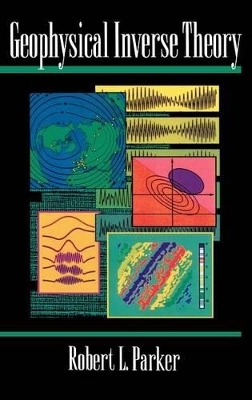
Geophysical Inverse Theory
Seiten
1994
Princeton University Press (Verlag)
978-0-691-03634-2 (ISBN)
Princeton University Press (Verlag)
978-0-691-03634-2 (ISBN)
Inverse theory concerns the mathematical techniques that enable researchers to use the available information to build a model of the unknown system or to determine its essential properties. This book aims to provide a systematic development of inverse theory at the graduate and professional level. It is illustrated with examples from geophysics.
In many physical sciences, the most natural description of a system is with a function of position or time. In principle, infinitely many numbers are needed to specify that function, but in practice only finitely many measurements can be made. Inverse theory concerns the mathematical techniques that enable researchers to use the available information to build a model of the unknown system or to determine its essential properties. In Geophysical Inverse Theory, Robert Parker provides a systematic development of inverse theory at the graduate and professional level that emphasizes a rigorous yet practical solution of inverse problems, with examples from experimental observations in geomagnetism, seismology, gravity, electromagnetic sounding, and interpolation. Although illustrated with examples from geophysics, this book has broad implications for researchers in applied disciplines from materials science and engineering to astrophysics, oceanography, and meteorology. Parker's approach is to avoid artificial statistical constructs and to emphasize instead the reasonable assumptions researchers must make to reduce the ambiguity that inevitably arises in complex problems.
The structure of the book follows a natural division in the subject into linear theory, in which the measured quantities are linear functionals of the unknown models, and nonlinear theory, which covers all other systems but is not nearly so well understood. The book covers model selection as well as techniques for drawing firm conclusions about the earth independent of any particular model.
In many physical sciences, the most natural description of a system is with a function of position or time. In principle, infinitely many numbers are needed to specify that function, but in practice only finitely many measurements can be made. Inverse theory concerns the mathematical techniques that enable researchers to use the available information to build a model of the unknown system or to determine its essential properties. In Geophysical Inverse Theory, Robert Parker provides a systematic development of inverse theory at the graduate and professional level that emphasizes a rigorous yet practical solution of inverse problems, with examples from experimental observations in geomagnetism, seismology, gravity, electromagnetic sounding, and interpolation. Although illustrated with examples from geophysics, this book has broad implications for researchers in applied disciplines from materials science and engineering to astrophysics, oceanography, and meteorology. Parker's approach is to avoid artificial statistical constructs and to emphasize instead the reasonable assumptions researchers must make to reduce the ambiguity that inevitably arises in complex problems.
The structure of the book follows a natural division in the subject into linear theory, in which the measured quantities are linear functionals of the unknown models, and nonlinear theory, which covers all other systems but is not nearly so well understood. The book covers model selection as well as techniques for drawing firm conclusions about the earth independent of any particular model.
Robert L. Parker is Professor of Geophysics at the Scripps Institute of Oceanography at the University of California, San Diego.
PrefaceCh. 1Mathematical PrecursorCh. 2Linear Problems with Exact DataCh. 3Linear Problems with Uncertain DataCh. 4Resolution and InferenceCh. 5Nonlinear ProblemsAppendix A: The Dilogarithm FunctionAppendix B: Table for 1-norm MisfitsReferencesIndex
| Erscheint lt. Verlag | 5.6.1994 |
|---|---|
| Reihe/Serie | Princeton Series in Geophysics |
| Zusatzinfo | 90 figs. |
| Verlagsort | New Jersey |
| Sprache | englisch |
| Maße | 152 x 235 mm |
| Gewicht | 709 g |
| Themenwelt | Naturwissenschaften ► Geowissenschaften ► Geologie |
| Naturwissenschaften ► Geowissenschaften ► Geophysik | |
| ISBN-10 | 0-691-03634-9 / 0691036349 |
| ISBN-13 | 978-0-691-03634-2 / 9780691036342 |
| Zustand | Neuware |
| Haben Sie eine Frage zum Produkt? |
Mehr entdecken
aus dem Bereich
aus dem Bereich


